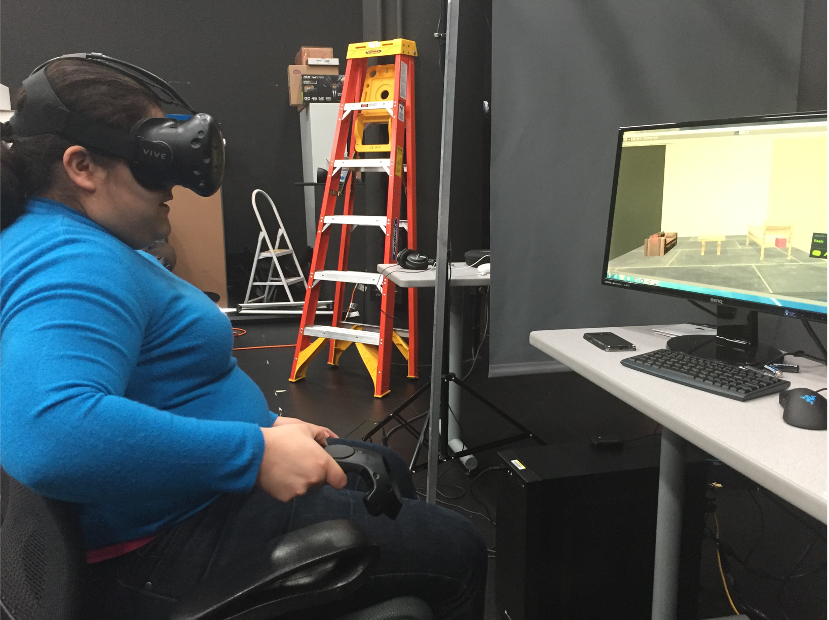
Comparing Input Methods and Cursors for 3D Positioning with Head-Mounted Displays Inproceedings
Junwei Sun, Wolfgang Stuerzlinger, Bernhard E. Riecke
Abstract:
Moving objects is an important task in 3D user interfaces. In this work, we focus on (precise) 3D object positioning in immersive virtual reality systems, especially head-mounted displays (HMDs). To evaluate input method performance for 3D positioning, we focus on an existing sliding algorithm, in which objects slide on any contact surface. Sliding enables rapid positioning of objects in 3D scenes on a desktop system but is yet to be evaluated in an immersive system. We performed a user study that compared the efficiency and accuracy of different input methods (mouse, hand-tracking, and trackpad) and cursor display conditions (stereo cursor and one-eyed cursor) for 3D positioning tasks with the HTC Vive. The results showed that the mouse outperformed hand-tracking and the trackpad, in terms of efficiency and accuracy. Stereo cursor and one-eyed cursor did not demonstrate a significant difference in performance, yet the stereo cursor condition was rated more favourable. For situations where the user is seated in immersive VR, the mouse is thus still the best input device for precise 3D positioning.
